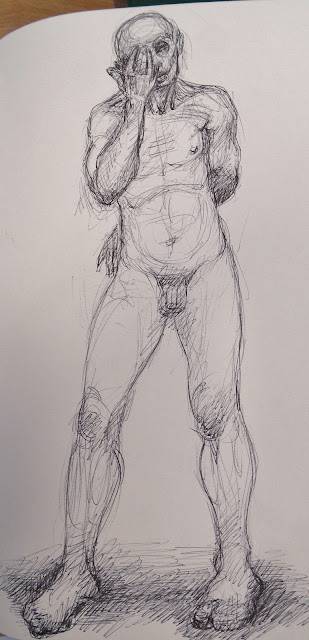The Abbot, from The Dance of Death ca. 1526, published 1538. Hans Holbein.
https://www.metmuseum.org/art/collection/search/336307
Travelling
by train to and from work everyday I often use this half hour as an opportunity
to read or sketch. This series of sketches emerged from that daily journey. Inspired
by Hans Holbein’s Dance of Death engravings, in which the playful personification
of death in the form of a skeleton surprises his unsuspecting victims, who come
from every age and station, with his mischievous sudden and unexpected
appearance in the midst of life; my ambiguous imaginative figure has a somewhat skeletal
head and by contrast a rather lusty body as he cavorts along from page to page
in an irreverent and provocative manner. Giving a familiar human form to something
mysterious and unknowable, personifying a process or abstraction we find difficult
to understand, and making fun of what we fear is a psychological technique for
confronting, coming to terms with, and taming our anxieties and insecurities about
life’s ultimate uncertainty and the inevitability of it's final end. This is no less true now than it was in the 16th
century for John Donne or Hans Holbein.

























